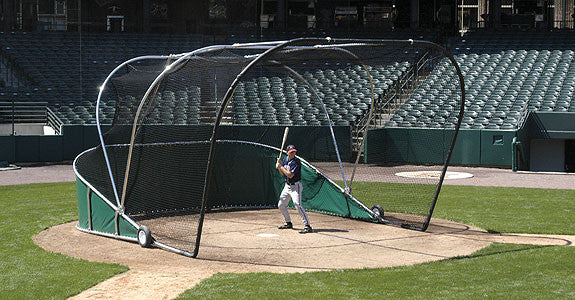How to Apply Pine Tar to Your Bat
The old adage a little goes a long way has never been truer than it is with pine tar. Regardless of whether you use the pine tar stick or liquid and a rag, you're only going to need a very small amount.
Applying pine tar to your bat is rather simple. You will only need:
Bat
Pine tar stick (or container of liquid pine tar)
Application rag (if using liquid pine tar)
Duct tape
Rosin bag
You can find many of these items in our Bat Accessories section of our online store. Or, you can create a pine tar rag yourself at home without having to pay a premium price. Follow these steps to create your own rag:
1. Use a flat and clean cloth rag and cut into a 9x9 inch square. Avoid terry-cloth towels.
2. Cut the duct tape into 11 inch strips. Cover one side completely, keeping 1 inch on either side to overhang on the front of the rag. This will allow you to apply pine tar to your bat and not get any on your hands.
Now that you have your rag, you'll want to properly apply the pine tar to your bat. Follow these steps to ensure you are doing this correctly:
1. Take your rag or pine tar stick and apply to the area of the bat on your handle that you want. Make sure you check with your league to see how far up you can apply the tar.
2. The handle will be sticky, so use a rosin bag to make it more "grippy."
Baseball Fly Ball Exercise
A dynamic drill used for both infielders and outfielders to work on their jumps and reactions while accelerating to fly balls. The fielder starts from the pre-pitch position. He then uses a quick drop step to open his hips. This creates a direct line toward the ball. A line is formed with 3-4 players. The coach will stand approximately 10 feet in front of players with a ball in his hand. The first player faces the coach and on a command, breaks on the run at a 45 degree angle while looking back at the coach. The coach will then throw a ball slightly ahead of the player which leads to a running catch. After the play, the player returns to the end of the line. The next player in line repeats the drill. This drill can be done to the left, to the right, and straight over the head.
Key Teaching Points
Drop step
The first move for an infielder reacting to a fly ball is a quick drop step. This helps create a direct line to the ball. When the ball is hit directly over your head, it is best to drop step to your glove side, which gives you a little longer reach when catching a ball.
Acceleration
Have the player make his first 2-3 steps as quickly as possible and accelerate to the ball. Remind players to run on the balls of their feet. Pre-Pitch Set Up: Both infielders and outfielders always begin each drill from the proper pre-pitch set up. This means a good athletic position, knees flexed, hands in front of chest, and eyes on the ball.
We are a new team and not all that good, how do I create a positive atmosphere and keep the players motivated and enjoying the game as they play.
The biggest deal here is that you don't worry and you make a huge deal out of the score not being important. What is important is each accomplishment is what you celebrate and just like hitting the ball and running or picking it up and throwing. Your letter indicates that your worrying about motivation, when in truth just playing to be all the motivation they need not sure hundred percent what you mean by motivation. But little kids like that normally just love to play, let them play in different positions and set goals that you know they're going to accomplish. Just like this past Sunday we had three goals--- for six out of the 12 players to hit the ball, to make one out in the field, and scored one run and we were able to do that because of the way the league is built - inning consists of three outs, seven runs, or batting through the order when we change. We know that were going to accomplish almost every one of these and this week we will have a little different set of goals, but that's what were you tell them are going to try to do and have fun. Then after the game we will make comment immediately away from the parents. So is just you and the coaches and the players talking to each other about what you got accomplished today and how much fun it was. Make no mistake about it all you're doing is creating organized play with this age group you're not creating baseball players you're creating social skills, fun, and organizational aspects that they will need to work with. But winning and losing is the last thing that needs to be even brought up.
The very first year I coached we were eight year olds in a 10 under league we were 0-44, and the thing they remember to this very day is that we went to Pizza Hut and celebrated a rainout. but by the time they were 12 years old we were 2nd in the BABE RUTH WORLD SERIES for 12 and under.
Let me know what you think and hope that I've created some thought process.
Coach Arnald Swift
Below is a stock answer for concentration and pitch recognition along with being confident at the plate.
Try it and I believe that the player will start to hit and catch better.
For catching take way his glove and play catch with a foam ball or plastic ball then get a baseball and do the
drill I talk about below. We have to get over any fear and use to the ball. Believe it or not when they first
start the glove just gets in the way so eliminate it most of the time.
As simple as this sound get a piece of plywood, prop it up at and angle, have him or us throw the ball up the
board and then field it as it rolls back down.
The for fly balls or high throws, throw the ball onto a roof and catch it as it comes off, it is fun and teaches
throwing and eye hand coordination. Use a rubber ball or tennis ball gives a safer aspect to it if you so
desire.
Coach Arnald Swift
Common Issues With Young Baseball Players & What To Do As a Coach
If you are coaching young baseball players these will undoubtedly be three issues that you will encounter quite frequently. Hopefully these tips give you a good idea of how to correct things and get your young troops back headed in the right direction with their skill development. If you have any of your own coaching techniques or other common issues you encounter, please share them with us in the comments section below. Thanks for your time!
There are many different technical issues that young baseball players have when starting out but some seem to be a lot more common than others. Here are a few problems that are consistent with most kids and what you can do as a coach and/or parent to help steer them in the right direction.
Throwing
Every person that’s ever thrown a ball has their own technique that is slightly different in some way than everybody else’s. However, even though everyone throws differently, many still have the same problems. The most common problem that I see with kids throwing the baseball is the direction their body is going in when they throw. What typically happens is players will direct their momentum towards their glove side, instead of having it all going towards their target. This can happen for many reasons but typically it has to do with their glove getting away from their body during the throw and pulling them away from their target instead of towards it. Once your glove starts moving away from your body as you throw, it’s likely that your momentum will follow in the same direction. The consequences for your momentum being directed in other places than your target are typically a loss of velocity as well as accuracy. So make sure that your youn baseball players are directing momentum towards their target whether it be a catcher or a teammate in the field.
Hitting
There are very few techniques in sports that are debated more than hitting a baseball. But one consistent technique that’s taught is that when a player strides, it’s best for the stride to be going straight. A problem with a lot of younger hitters, however, is they will step away (usually opening up). Once you step away, your front shoulder will open up and allow your head to pull off, which will also increase the likelihood that your bat will not be in the strike zone as long as it could be. So before adjusting any technique of a hitter, make sure their stride is at least going forward to give the rest of their body a chance to do other things efficiently.
Fielding
A very common mistake that kids make while fielding a ground ball is where they position their glove when picking up the ball. What most kids like to do is put their glove straight down between their legs. The problem with this is when the ball is on its way, you cannot see your glove and watch the ball at the same time, meaning you can't see the ball into your glove (or as close as possible...sometimes it can be too fast to track right in). So you have to get your glove out in front of you so that you can see the ball in (like Dustin Pedroia in the picture above). This technique will also help you adjust to bad hops by giving you the opportunity to move your glove back to your body if necessary. It’s a lot easier to adjust bringing your glove in than adjusting it out.
Kevin Hussey
Hitting (Hitting off a Tee)
Favorite part of practice is batting practice, where they get to see how hard and far they can hit a baseball. The problem with batting practice is how kids handle it. A lot of kids see batting practice as a homerun derby with the ball perfectly placed each time (or waiting for a perfectly placed one) and swinging for the fences. When you hit off a Tee, your goals can be made more appropriate for trying to become a better hitter and can be made more realistic to game situations when done correctly. The goal of hitting the ball off the tee is to try and square up the ball as much as possible because almost all results will be the same anyways. Hitting off a tee allows you to forget about your surroundings and concentrating on increasing your strength and using proper technique. Placing the Tee in different locations that represent where an actual ball may be pitched to you - raise and lower the Tee, place it closer to you and further away - can help you learn what adjustments your body will need to make to square up on a ball based on the pitch location.
Ground balls (Using a Wall)
Taking ground balls seems like it would be at least a two person activity but it doesn’t need to be. If you’re in a position where you can only practice by yourself, try throwing yourself groundballs off the wall (among other ideas). You don’t need to have a hard ball to practice this. If you have any type of ball that bounces you can work on almost all the skills involved with picking up a ground ball. You can still learn to read different types of hops while regulating your speed to the ball allowing your body to be in a good fielding position. The best part of throwing a ball off the wall is you can adjust every throw to cater to your defensive needs. The only thing you can’t really simulate is being able to read a ball off the bat, but learning how to get your body in a good fielding position will ultimately help you with that as well.
Pop ups (Using a Tennis Racket)
This is a little easier with a partner, but catching pop ups generally requires a coach that’s capable of hitting pop flies to their target and this can be very difficult for inexperienced coaches and an inefficient use of time. It can make pop ups a lot easier if you try it with a tennis ball and racket. Using a tennis racket and hitting the ball up in the air is a great way to consistently hit pop ups at your target. Along with being able to hit them extremely high and accurate, the tennis ball will be influenced by the wind making it a challenge for the person receiving them. This drill works great for catchers pop ups.
All of these drills will help you practice your skills on your own and are just a few examples of many ways you can work on your own. When trying to become a better athlete, all of your most important work will get done on your own so don't wait for a team practice or a bunch of teammates to get together. Try and find different ways that you can become great at practicing baseball without relying on anyone else.
I'd love to hear about your favorite "solo" drills. Please feel free to share them in the comments below so others can benefit from them.
Kevin Hussey
Controlling the Running Game, we talk about varying looks. Varying looks can be thought of as varying your timing to the plate with runners on base, not necessarily how many times you look at a runner, although that can be considered an element as well.
Pitchers can come up with a number of ways to vary their looks on the mound. To accomplish this, as the pitcher comes set and prepares to deliver the pitch, we can hold the ball for either a count of "1 one thousand, 2 one thousand" or 3-4 "one thousands" or even longer if you wanted to (although someone is likely to call time), while mixing up how many times we physically look at the runner. This is done most often with runners at first or second. Holding the ball for 3-4 "one thousands" can really disrupt the timing of a base runner and also serve to stiffen his legs creating a poor reaction state for the runner. Holding the ball for 3-4 "one thousands" is also a great time to pick, especially with a player on first who is looking to run. At first base this is crucial as we want to limit the jump the runner gets on a straight steal or on contact, thus making scoring position harder to achieve and double plays easier to turn.
Varying your looks with a runner at second is important because if we can limit the jump, the runner will be less likely to steal third or score on a single. We deal with a lot of athletes looking to play at the next level and as you move on in your career, the demand to hold runners and limit runs increases. The truth is, if you can’t hold runners you just won’t be able to pitch in collegiate baseball or other high levels of baseball.
Ryan Armstrong, Head Pitching Coach
"A baseball fan has the digestive apparatus of a billy goat. He can, and does, devour any set of statistics with insatiable appetite and then nuzzles hungrily for more." - Sportswriter Arthur Daley
"Anybody with a pencil could be a statistician back then (19th Century)." - Statistician Seymour Siwoff of the Elias Sports Bureau
"A passion for statistics is the earmark of a literate people." - Paul Fisher
"Baseball fans are junkies, and their heroin is the statistic." - Robert S. Weider in In Praise of the Second Season (1981)
"Baseball isn't statistics - baseball is (Joe) DiMaggio rounding second." - Jimmy Breslin
"Baseball is probably the world's best documented sport." - Ford C. Frick in Games, Asterisks and People (1973)
"I don't know whether you know it, but baseball's appeal is decimal points. No other sport relies as totally on continuity, statistics, orderliness of these. Baseball fans pay more attention to numbers than CPAs." - Sportswriter Jim Murray
"I don't think baseball could survive without all the statistical appurtenances involved in calculating pitching, hitting and fielding percentages. Some people could do without the games as long as they got the box scores." - John M. Culkin in New York Times (July 13, 1976)
"I don't understand. All of a sudden, it's not just BA and Runs Scored, it's OBA. And what is with O-P-S?" - ESPN Analyst Harold Reynolds (04-2004)
"If you dwell on statistics, you get shortsighted. If you aim for consistency, the numbers will be there at the end." - Pitcher Tom Seaver
"I really don't care much about baseball, or looking at ball games, major or minor. All my interest in baseball is in its statistics." - Ernest J. Lanigan in The Baseball Cyclopedia (1922)
"Lajoie was perhaps the first player to attract nationwide attention because of his batting average. Prior to his time, the fans were only mildly interested in statistics." - Sportswriter Bob French
"Say you were standing with one foot in the oven and one foot in an ice bucket. According to the percentage people, you should be perfectly comfortable." - Manager Bobby Bragan
"Statistics are about as interesting as first base coaches." - Pitcher Jim Bouton
"Statistics are the lifeblood of baseball. In no other sport are so many available and studied so assiduously by participants and fans. Much of the game's appeal, as a conversation piece, lies in the opportunity the fan gets to back up opinions and arguments with convincing figures, and it is entirely possible that more American boys have mastered long division by dealing with batting averages than in any other way." - Leonard Koppett in A Thinking Mans Guide to Baseball (1967)
"They both (statistics & bikinis) show a lot, but not everything." - Infielder Toby Harrah
"When I negotiated Bob Stanley's contract with the Red Sox, we had statistics demonstrating he was the third-best pitcher in the league. They had a chart showing he was the sixtieth-best pitcher on the Red Sox!" - Agent Bob Woolf
"Who says there's an unemployment problem in this country? Just take the five percent unemployed and give them a baseball stat to follow." - Outfielder Andy Van Slyke
|
Defensive Abbreviations for Scoring or Watching
|
|
A
CS
DP
E
GP
OFA
PB
PK
PO
SB
TC
TP
|
Assists
Caught Stealing
Double Plays
Errors
Games Played
Outfield Assists
Passed Balls
Pickoffs
Putouts
Stolen Bases
Total Chances
Triple Plays
|
|
Pitching Abbreviations for Statistics
|
|
AO
BB
BFP
BK
CBO
CG
CGL
ER
ERA
GF
GO
GOAO
GP
GS
H
HBP
HR
IBB
IP
IRA
IPS
L
MB9
OBA
PA
R
RPF
RW
S/SHO
SO
SV
SVO
TB
W
WP
|
Fly Outs (Air)
Walks (Bases on Balls)
Batters Facing Pitcher
Balks
Combined Shutout
Complete Games
Complete Game Losses
Earned Runs
Earned Run Average
Games Finished
Ground Outs
Ground Outs / Fly Outs Ratio
Games Played
Games Started
Hits
Hit Batters
Home Runs
Intentional Walks
Innings Pitched
Inherited Runs Allowed
Innings Per Start
Losses
Baserunners Per 9 Innings
Opponents' Batting Average
Plate Appearances
Runs
Relief Failures
Relief Wins
Shutouts
Strikeouts
Saves
Save Opportunities
Total Bases
Wins
Wild Pitches
|
|
|
AO
BB
BFP
BK
CBO
CG
CGL
ER
ERA
GF
GO
GOAO
GP
GS
H
HBP
HR
IBB
IP
IRA
IPS
L
MB9
OBA
PA
R
RPF
RW
S/SHO
SO
SV
SVO
TB
W
WP
|
Fly Outs (Air)
Walks (Bases on Balls)
Batters Facing Pitcher
Balks
Combined Shutout
Complete Games
Complete Game Losses
Earned Runs
Earned Run Average
Games Finished
Ground Outs
Ground Outs / Fly Outs Ratio
Games Played
Games Started
Hits
Hit Batters
Home Runs
Intentional Walks
Innings Pitched
Inherited Runs Allowed
Innings Per Start
Losses
Baserunners Per 9 Innings
Opponents' Batting Average
Plate Appearances
Runs
Relief Failures
Relief Wins
Shutouts
Strikeouts
Saves
Save Opportunities
Total Bases
Wins
Wild Pitches
|










